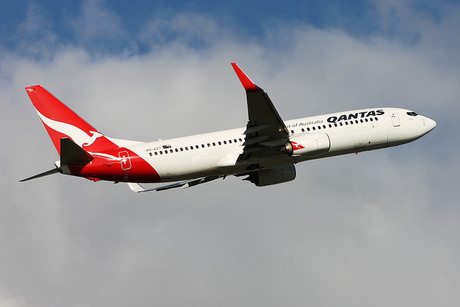Airservices embarks on transformation program

Airservices Australia, the government organisation providing services including air traffic management for the local aviation industry, is embarking on a transformation drive aimed at meeting the industry’s future needs.
In a speech to the Waypoint Annual Conference this week, the organisation’s acting CEO, Jason Harfield, detailed the planned Business Diagnostic and Efficiency Review.
He said there is expected to be a 60% growth in air traffic movements over the next 15 years, and keeping up with this demand will require a transformation aimed at improving service delivery capabilities.
As part of the program, the organisation plans to realign its cost base and back-room processes to ensure a customer focus for its service delivery.
“I want this review to look at everything we do, and how we do it,” Harfield said. “I see this as the first step on the transformation road so we ensure we’re best placed to meet our future challenges.”
Airservices Australia is consulting with its customers in the aviation industry — which range from small aircraft operators to large international airlines — on a new long-term pricing agreement that is economically efficient and flexible enough to cater to the range of customers.
Harfield said Australia is socially and economically dependent on aviation, and so keeping ahead of changes to the industry to ensure that the organisation can continue to deliver the service of air safety is vital.
“The safety, efficiency and overall performance of the Australian aviation industry is underpinned by the air traffic management system,” he said.
“We have many important programs underway focused on delivering what is best for our customers, stakeholders and our people. For Airservices, and ultimately our industry, to succeed, the constraints of the past cannot become the assumptions of our future.”
Harfield also used his presentation to discuss details of the organisation’s progress with its air traffic flow management and airport capacity programs. The organisation has now deployed 73 automatic dependent surveillance broadcast (ADS-B) ground stations, giving Australia a world-leading satellite air safety surveillance system.
ADS-B is a cooperative surveillance technology involving aircraft broadcasting its position — as determined through satellite navigation — to air traffic control ground stations or to other aircraft.
Harfield said 99.5% of commercial aircraft operations above 29,000 feet are now using the system.
In addition, reported statistics show that nine in 10 tracked flights now arrive on time. Performance has particularly increased in Brisbane, where on-time performance has grown from 65% in 2012 to around 90% this year.
Airservices’ safety performance also improved. In the last financial year, Harfield said there was a 66% reduction in en route loss of separation events that could be attributed to air traffic control failures.
In Australia, loss of separation for planes falling under instrument flight rules — including all passenger aircraft — is defined as flying within 1000 feet (305 metres) vertically or 9.26 km horizontally. Above 29,000 feet, required vertical separation increases to 2000 feet.
Airservices’ firefighting team, which operates at 26 airports, meanwhile responded to over 6700 calls and saved 13 lives.
Interview: Phil Zammit, Avaya
For our summer Leaders in Technology series we are discussing AI, system complexity, skills and...
From training to collaboration: how XR can transform public sector operations
Extended reality (XR) has emerged in recent years as a powerful tool for public service...
How financial automation bridges the public sector resource gap
The growing resources gap in finance and technology is a key challenge in the public sector.



